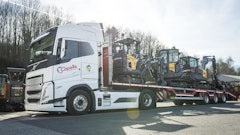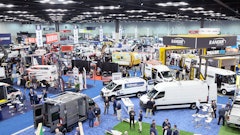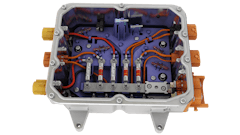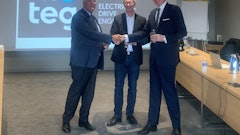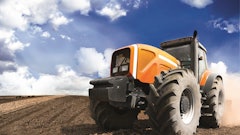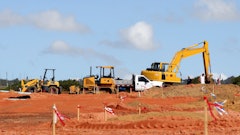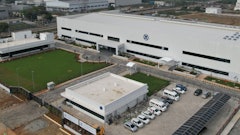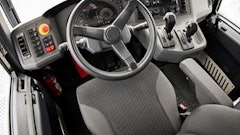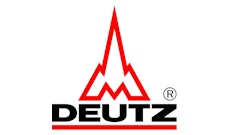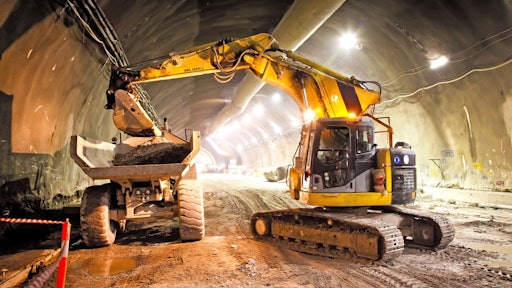
The construction industry is rapidly transitioning to electric solutions, driven by stricter emissions regulations and high fuel costs. Experts expect the industry to reach a tipping point in 2025, where the majority of heavy equipment will move away from diesel engines to electric or hybrid, and this trend will continue to grow in the coming years.
Some current trends in construction vehicle electrification include international regulatory pressures, the exponential growth in suppliers and services catering to the increasing demand for electric construction equipment and new technologies that provide options for original equipment manufacturers (OEMs).
Increasing Regulatory Pressures Globally
The trend toward adopting battery-powered construction equipment is rapidly advancing internationally, driven by the implementation of stricter emission regulations. Governments and regulatory bodies worldwide are enacting more stringent emission standards for non-road diesel engines used in construction, making it increasingly difficult for construction companies to operate diesel-powered equipment. For example, the European (EU) Stage V Emission Regulations and China VI Emission Standard represent global trends of efforts to reduce exhaust emissions from non-road mobile machinery. In addition to emission regulations, many governments, right down to the municipal level, are introducing low-noise requirements, especially in residential areas. 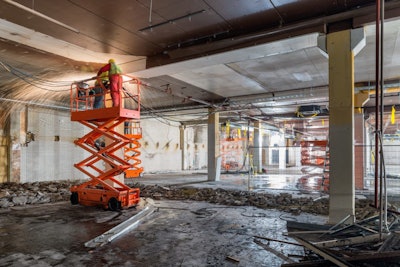 Delta-Q Technologies
Delta-Q Technologies
Besides stricter regulations on emissions and noise levels, the high cost of diesel fuel is also a significant factor driving the trend toward electric solutions. As fuel prices continue to rise, OEMs are looking for ways to reduce costs and stay competitive. Electric construction equipment offers a more efficient and cost-effective solution, as it consumes less energy and has lower operating costs.
The trend towards battery-powered construction equipment is on track to accelerate in the coming years as governments worldwide enforce emission regulations and promote the use of clean energy.
Decreasing Costs Making Electrification More Accessible
One of the key trends in the construction equipment industry is that electrification is becoming more cost-effective as supply and demand increase and technology improves. As fuel costs continue to rise and other expenses to operate diesel-powered equipment remain high, the benefits of using electric construction equipment are becoming more apparent and the alternative-powered technology more popular, making it a more attractive solution.
Advances in battery technology and electric motor efficiency have also led to lower production costs of electric construction equipment, making it a more accessible option for OEMs of all sizes. While the initial costs are currently higher for electric equipment than diesel counterparts, lower maintenance and operating costs offset the difference.
Additionally, governments and organizations are increasingly providing subsidies and incentives for using electric industrial machinery, including construction equipment. As a result, battery-operated construction machinery is becoming more affordable and accessible to OEMs of all sizes, making it a viable alternative to traditional diesel-powered equipment.
Evolution of Suppliers & Dealers in Response to Industry Growth
As the construction industry continues to grow and evolve, so do the suppliers and dealers that support it. With increasing demand for electrified equipment and a growing need for sustainable and cost-effective solutions, companies are developing and producing more components and software to meet these demands. This shift is particularly significant for manufacturers of traditional internal combustion engine (ICE) parts, who are experiencing significant disruption as electric vehicles become more mainstream.
Dealers are also poised to experience significant changes in their operating models. ECE has significantly fewer parts and requires a different type of service than ICE, so dealers are facing a change in their offering of products and services that might include supporting and servicing batteries, recharging vehicles, etc. In a 2021 survey of off-highway-equipment dealers by McKinsey & Co., 78% of respondents see the chance to sell new products and services for electrified equipment as the most significant opportunity presented by the energy transition in off-highway vehicles. These products and services may include charging infrastructure, battery services, battery recycling, and even providing expert advice to customers on government regulations and incentives.
Overall, as the construction equipment industry shifts towards electric power, the supporting sectors for supply, sales, servicing and distribution are also projected to experience substantial change in the coming years.
Advances in Battery & Charging Technologies Expand Electrification to Larger Equipment
More advanced battery technology plays a crucial role in the increasing popularity and adoption of electric construction equipment. The latest advancements in battery technology have led to improvements in energy density, power output and durability, which in turn have enabled the use of electric power in larger and more demanding equipment.
One of the most popular types of electric construction equipment is the small compact excavator, which has been available as an electric vehicle (EV) for a long time. However, as battery technology continues to improve, manufacturers are developing the capability to electrify larger equipment, including cranes, mining trucks and other heavy-duty machines. In addition, with the increase of batteries now able to power larger equipment for more extended periods, OEMs can now choose from a broader range of electric options that can handle even the most demanding tasks.
Recent advancements in battery technology have also led to improvements in charging times, which is critical for operators that need their equipment back in operation as quickly as possible. Faster charging times allow electric construction equipment to be charged in a shorter period, resulting in more hours of operation. Charging solutions have significantly advanced along with chargers. Chargers are designed closely with battery and equipment manufacturers as well as strictly examined, even in intense conditions, to ensure a prolonged battery life. With enhanced flexibility, charger designs can incorporate portability to easily access an electrical outlet.
Solar-Powered & Portable Charging Solutions Enabling Remote Operations
As the adoption of electric construction equipment grows, the need for reliable and accessible charging infrastructure is becoming increasingly important. Construction companies operating in remote or inaccessible areas will increasingly turn to solar-powered EV charging or portable power storage and charging as a solution. Solar-powered charging solutions can be set up quickly and easily and provide a reliable power source to charge ECE. Portable power storage and charging solutions also enable the use of construction equipment in remote areas, with trailer-mounted batteries and EV charging stations becoming more common on work sites. The growing adoption of solar-powered EV charging and portable charging for off-grid construction sites offers a green solution for construction equipment as regulations mandating reduced emissions become more stringent.
The Future Is Electric
As stricter emissions regulations and high fuel costs continue to drive the adoption of battery-powered equipment globally, the demand for electric construction equipment will also increase. More companies are entering the market and offering OEMs more options and price points. Additionally, the overall cost of electric construction machinery is decreasing, and advancements in battery and charging technology are increasing, making electrification more accessible to end-users, such as construction companies and equipment of all sizes. The construction industry is rapidly transitioning to electric solutions, and the future looks bright (and electric) for construction equipment.
Mourad Chergui is senior product manager for Delta-Q Technologies.










